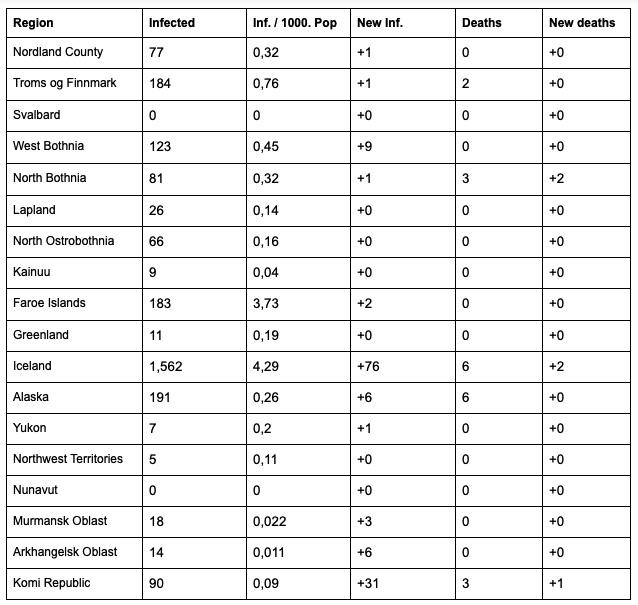Covid-19 in the Arctic: The High North is Vulnerable, yet also Easier to Protect

Nuuk, Greenland. Photo: Pro Studio
“It is easier to close off parts of the northern regions and through that flatten the curve in the High North”, says the Danish virus expert Anders Koch. However; “we cannot keep society shut down indefinitely”, says University of Tromsø researcher Ørjan Olsvik.
Infection figures in the High North and the Arctic are still relatively low, compared to southern regions. There are no registered cases in Svalbard, and several Arctic regions have no confirmed deaths. However, we are nevertheless at the beginning of the pandemic and it is hard to predict how it will unfold over the next couple of weeks.
“Many Arctic regions are vulnerable to the virus. The health care services do not have the same capacity in the northern regions of the country as in the south. Besides, there are longer distances between places and people. If people get ill in the north, they will on average have to do a longer journey in order to receive medical treatment. At the same time, there are more opportunities to reduce the spreading of the virus or at least flatten in, as it is easier to shut down parts of the northern regions”, Dr. Anders Koch says to High North News.
Does the Arctic climate have any bearing on the spreading of the virus?
“I don’t think the climate itself has much to say for how the virus spreads. It has more to do with how people live in the Arctic. Population density is lower and that makes the virus spread slower across these areas”, he says.
Has the High North gained time to manage the virus so as to avoid a surge in infections, or is the High North simply lagging behind the southern regions?
“That depends at least in part on the measures taken. If we look at Greenland’s case, where there are long distances between communities and towns, is is more likely that the virus will not spread as fast as in more urban areas”, he says.
Greenland is one of the Arctic regions with the lowest infection rates. 11 persons have been confirmed to have tested positive for Covid-19 in the country so far.
“If they manage to keep villages and towns virus free, they are obviously safe. However, if people with infection come into these places, the virus is likely to spread rapidly there”, he says.
Anders Koch says it is hard to estimate how the spreading of infection will evolve over the coming weeks and months.
“It is hard to predict anything. How it goes will depend on the measures taken and on the extent to which people take the authorities’ advice seriously”, Koch remarks.
Did the local quarantine regulations in Northern Norway work? And should they be prolonged?
“Whether or not they have worked is hard to tell. We do not have any figures for the effect of these. However, we do see that infection rates in the North are lower. The local quarantine regulations have certainly worked as a mental reminder to people. It also made companies and others who were meant to go to Northern Norway rather organize their meetings online. However, after Easter, the plan is for society to open up again. We cannot live like this forever”, Ørjan Olsvik says to High North News.
What is the reason why infection rates are lower in the North compared to in southern regions?
“One aspect is that we have not had as much import from abroad as they have had in the south. Most of those who brought the virus to the country were ski tourists coming back from Northern Italy and Austria. We had some of those in the North too, tough not many. The other aspect is that the population density is higher there, in Oslo and Viken counties, where there is a high level of infections right now.”
High North News will continue its mapping of the Corona virus in the Arctic after the Easter holidays.
Total number of confirmed cases of Covid-19 in the High North

Total number of confirmed cases of Covid-19 in Arctic Council Member States

This article was originally published in Norwegian and has been translated by HNN's Elisabeth Bergquist.



